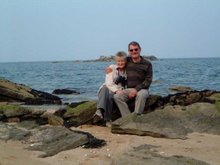Ephesus is a short drive from Kusadasi and is claimed to be the best preserved ancient city after Pompeii, hence the cruise ships.
Ephesus is on a slope so, we start at the top: the bus will
meet us at the bottom, one of the advantages of being in a tour group. The
first street is a long, elegant colonnade, but where are all the trippers?
Alongside the street are many artistic embellishments as in the next two photos. Art and elegance were important in the ancient world as well as functionality.
Ephesus first appears in recorded history in the 7th
century BC. After being subject to several conquests, by the 3rd
century BC under Lysimachus it became the most important Greek city in what was
then called Asia Minor. It was also an important port but, but as with Troy,
the sea has long receded.
The most impressive building is the reassembled ruin of the great 2nd century library, the third largest in the ancient world.
Past the library is the agora or market place and yet more columns indicating streets very similar to the first Ephesus photo above but the hillside 25,000 seat amphitheatre is worth a look if you can ignore the crane..
The coach is waiting for us at the lower car park to whisk
us off to the carpet factory where carpets are still produced by hand weaving
in the traditional way. Here’s a weaver demonstrating, and a new recruit
learning the ropes whom you might recognise.
The carpet above is wool, but they also weave in silk that
they produce themselves. Each cocoon, one of many floating in the bowl in the
next photo, provides a mile of very fine silk.
This is an example of the traditional designs produced here.
And this is the carpet that we actually bought!
The salesman’s appearance may not inspire confidence, but most Turkish males look like that. The carpet is being sent in a few months: being a magic carpet, it will find its own way to us.
So then lunch nearby, and back on the bus – to visit the
Blessed Virgin Mary’s abode, and here she is, in statue form. The shimmering
light isn’t a heavenly glow but the reflection off the bus window.
The story is that Jesus, on his crucifixion, commended John the apostle to look after his mother as his own mother. There is some evidence that John visited Ephesus and was buried there so the legend took root that he and Mary lived nearby in this next spot. The building was originally their house and the ruins were subsequently turned into a small chapel where pilgrims could pay respects
.
Our hotel stop tonight is at Pumukkale where there are more items to visit tomorrow, but we have one last extra freebee before dinner and that is a performance by the Whirling Dervishes. This is to take place in a marquee near the hotel. It is a serious ritual and we are asked not to clap or take photos until right at the end when photo shot opportunity would be provided. Firstly, there’s a small musical group playing snake-charmer type music with a vocalist making calling-to-prayer type noises. Then the three dervishes dressed in white with Bill-and-Ben hats come on.
The combo strikes up again and off they go, whirling away, for a good 15 minutes.
The amazing thing is that none of them gets giddy and falls over. It’s a spectacle not to be missed but not necessarily repeated.
















No comments:
Post a Comment